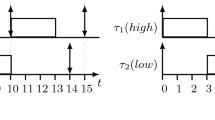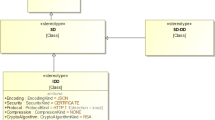Abstract.
In the two parts of this article a transformational approach to the design of distributed real-time systems is presented. The starting point are global requirements formulated in a subset of Duration Calculus called implementables and the target are programs in an OCCAM dialect PL. In the first part we show how the level of program specifications represented by a language SL can be reached. SL combines regular expressions with ideas from action systems and with time conditions, and can express the distributed architecture of the implementation. While Duration Calculus is state-based, SL is event-based, and the switch between these two worlds is a prominent step in the transformation from implementables to SL. Both parts of the transformational calculus rely on the mixed term techniques by which syntax pieces of two languages are mixed in a semantically coherent manner. In the first part of the article mixed terms between implementables and SL and in the second part of the article mixed terms between SL and PL are used. The approach is illustrated by the example of a computer controlled gas burner.
Similar content being viewed by others
Author information
Authors and Affiliations
Additional information
Received: 10 June 1996 / 29 December 1997
Rights and permissions
About this article
Cite this article
Schenke, M., Olderog, ER. Transformational design of real-time systems Part I: From requirements to program specifications . Acta Informatica 36, 1–65 (1999). https://doi.org/10.1007/s002360050153
Issue Date:
DOI: https://doi.org/10.1007/s002360050153




